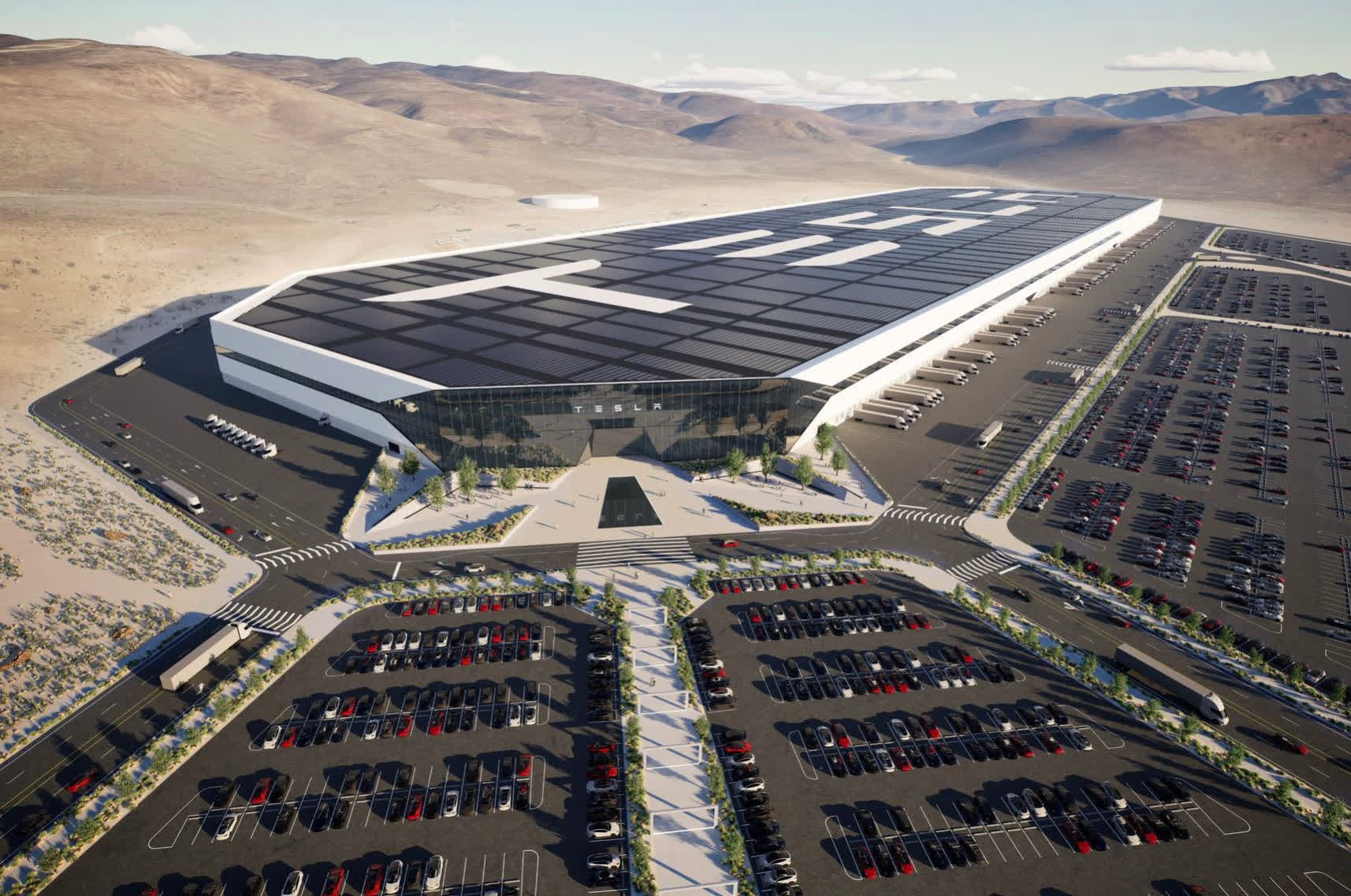In brief: Tesla's Gigafactory in Nevada will continue to grow thanks to an additional infusion of cash. The electric automaker has announced plans to invest over $3.6 billion more into the massive 5.4 million square foot battery and component complex. The expansion calls for two new facilities including a 100 GWh 4680 cell factory capable of producing enough batteries for 1.5 million light duty vehicles annually and the company's first high-volume Semi factory.
Tesla unveiled its 4680 battery cell format during its battery day keynote in 2020. The cell measures 46mm x 80mm (hence the 4680 name) and produces five times the energy, six times the power and affords a 16 percent range increase courtesy of the new design.
The Semi was introduced way back in 2017 and was supposed to enter production a couple of years later. Manufacturing would not start until 2022, however, with Pepsi taking delivery of the first production units late last year. Others that have reportedly placed orders for Tesla Semi trucks include the United Parcel Service and Walmart.

Semi has an estimated range of 500 miles, consumes less than 2 KWh per mile and can regain 70 percent of range with a 30-minute charge. Tesla notes that charging with electricity is approximately 2.5 times cheaper per mile than filling up with diesel, and can save operators up to $200,000 within their first three years of ownership.
The expansion at Gigafactory Nevada, which is located just outside of Reno, will also create 3,000 new jobs.
Tesla currently operates five Gigafactories around the world with additional locations in New York, Austin and Shanghai. A sixth factory is reportedly being planned for construction in the northern Mexican state of Nuevo Leon.
In September, experts told Reuters that Tesla was having issues with the dry-coating technique used in the production of its 4680 batteries. Because the tech is so new and unproven, the automaker was reportedly struggling to scale production to a level where big cost savings would kick in.
